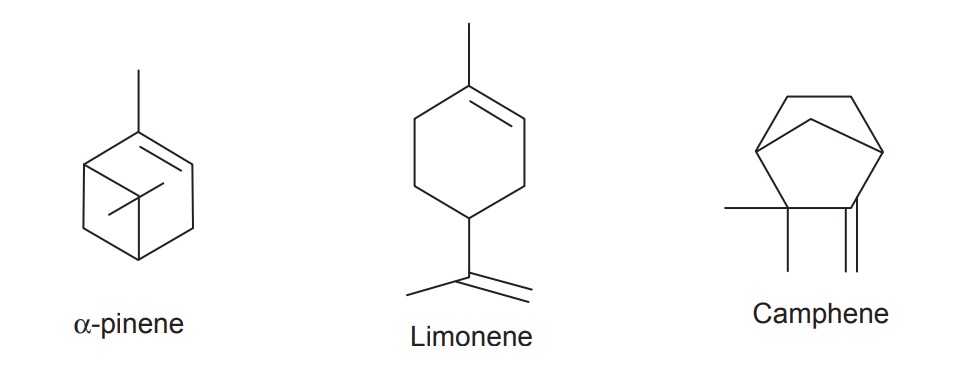Turpentine Oil
| Home | | Pharmacognosy |Chapter: Pharmacognosy and Phytochemistry : Drugs Containing Volatile Oils
Turpentine oil is the volatile oil obtained by the distillation of oleoresin from Pinus longifolia Roxb and various species of Pinus, belonging to family Pinaceae.
TURPENTINE OIL
Synonyms
Oleum terbinthae, rectified oil of turpentine.
Botanical Source
Turpentine oil is the volatile oil obtained by the
distillation of oleoresin from Pinus
longifolia Roxb and various species of Pinus, belonging to family Pinaceae.
Geographical Source
Pinus longifolia is cultivated in India and Pakistan,
the other species are cultivated in
the United States, France, Europe, and Russia.
Collection and Preparation
The oleoresins which are collected are transferred to copper
stills, water is added and heated. The impurities like woody debris, sand, and
other particles float on the surface of water which is skimmed off. The
clarified resin is then subjected to distillation for obtaining the oil. The
oil obtained is then treated with aqueous solution of sodium hydroxide. The
treatment with sodium hydroxide removes the traces of phenols, cresol, and
resin acids. This oil which is produced is called the rectified turpentine oil.
Characteristics
Turpentine oil is a colourless to slightly yellowish
trans-parent liquid with a strong characteristic odour and bitter, pungent
taste. It is soluble in alcohol, insoluble in water, and miscible with glacial
acetic acid, ether, chloroform, and fixed oil. Turpentine oil should be stored
in air-tight containers and in a cool place.
Chemical Constituents
Oil of turpentine contains more than 40 terpenes; the chief
terpenes are α- and β- pinene with small quantity of
camphene, limonene, etc.

Uses
Turpentine oil is used as counterirritant, rubefacient, in
swelling, neuralgia, as mild antiseptic, as an expectorant in chronic bronchitis,
as diuretic, and urinary antiseptic. When taken internally it causes irritation
of kidney also. In industries it is used in the preparation of disinfectants,
insecticides, paints, varnishes, and pine oil.
Adulterants
The common adulterants are resin oil, wood turpentine, and
petroleum jelly. The last adulterant is detected by low weight per ml of the
oil and resin oil forms a stain of fatty matters on staining on a paper.
Marketed Products
It is one of the ingredients of the preparations known as
Rumalaya gel and Pain balm (Himalaya Drug Company).
